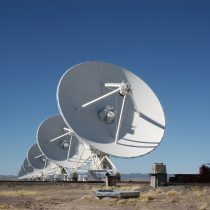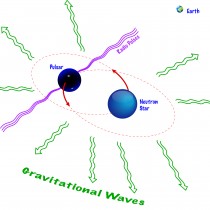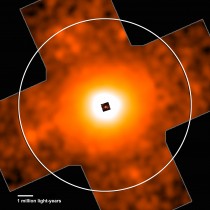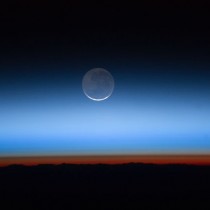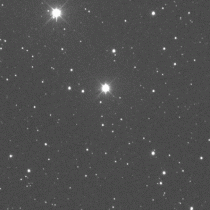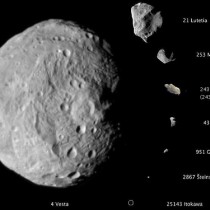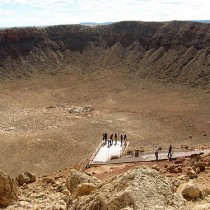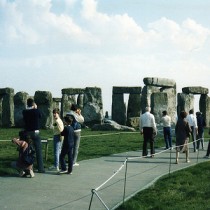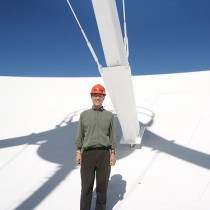Thirty Years of Space VLBI
- By Koji Mukai
- July 25, 2016
- Comments Off on Thirty Years of Space VLBI
As I write this in July 2016, it has been 30 years since the first successful space very long baseline interferometry (VLBI) observations were made. VLBI is the radio astronomy technique to use widely separated radio dishes to produce exquisite images of celestial radio sources – and space VLBI allows … Continue Reading →
We Knew That Already
- By Koji Mukai
- March 17, 2016
- Comments Off on We Knew That Already
The Advanced LIGO group announced the first direct detection of gravitational waves on February 11, 2016 – it was a momentous day for physics and astrophysics. But the way some news outlets have reported it, saying things like “this proves Einstein was right,” sounds a little bit off to me: … Continue Reading →
The Learning Curve
- By Koji Mukai
- July 10, 2015
- Comments Off on The Learning Curve
Japan has established a strong presence in X-ray astronomy ever since the successful launch of the Hakucho satellite in 1979. Hakucho was followed by Tenma (launched in 1983), Ginga (1987), ASCA (1993), and Suzaku (2005), with the last three in collaboration with international (notably US) partners. Suzaku was designed to … Continue Reading →
No Mardi Gras under a Full Moon
- By Koji Mukai
- February 12, 2015
- Comments Off on No Mardi Gras under a Full Moon
Here is a fun factoid: Mardi Gras is never celebrated under a Full Moon. If you have come across any books, movies, songs or whatever that describes Mardi Gras under a Full Moon, you know it’s a work of fiction. Calendar and astronomy are intimately linked. The civil calendar used … Continue Reading →
Light Echoes around a Mysterious Nova
- By Koji Mukai
- June 24, 2013
- Comments Off on Light Echoes around a Mysterious Nova
“In 1890 T Pyxidis had appeared, brightened, and disappeared. When I first came to Harvard they were still telling how it was found again during a routine survey of plates taken in 1919, and how Miss Leavitt exclaimed: ‘That star hasn’t been seen for almost thirty years!’ – the first … Continue Reading →
A Victorian Scandal
- By Koji Mukai
- March 18, 2013
- Comments Off on A Victorian Scandal
A recent event reminded me of a scandal of a sort that happened around 1850. At the center of it was John Russell Hind, a British astronomer (I mentioned him in a previous blog about archives). Hind was a superb observer who knew the sky very well. He discovered many … Continue Reading →
Post-apocalyptic Musings
- By Koji Mukai
- January 3, 2013
- Comments Off on Post-apocalyptic Musings
Congratulations! You have survived the end of the world on December 21st, 2012. Many of you who never believed it may nevertheless be relieved, thinking that we can now forget about these apocalyptic prophecies. But, you would be wrong, in my opinion. It’s likely that, before too long, the Internet … Continue Reading →
What is a Galaxy?
- By Koji Mukai
- September 17, 2012
- Comments Off on What is a Galaxy?
“Galaxy,” Defined — when I came across a paper with this title while browsing a recent issue of Astronomical Journal, I was intrigued. You would think that such a widely known term, one so fundamental to modern astronomy, would have been defined a long time ago. But then, sometimes the … Continue Reading →
A Midsummer Day’s Rant
- By Koji Mukai
- June 20, 2012
- 1 Comment
This year, the summer solstice happens on Wednesday, June 20th, in mainland US, at 7:09 pm Eastern Daylight Time. This is often reported in the news as the beginning of the “official” or “astronomical” summer. Who decided that seasons begin at equinoxes and solstices, though? Words like “equinox” and “solstices” … Continue Reading →
An “X-ray Astronomer” Among Radio Telescopes
- By Koji Mukai
- April 30, 2012
- 2 Comments
To me, an observational astronomer, there is no such thing as X-ray astronomy. What I do is astronomical research on objects that happen to emit X-rays, as well as ultraviolet, visible, and infrared, etc. light. My research interest is not X-rays, but astronomical objects called cataclysmic variables and symbiotic stars … Continue Reading →


